
This tutorial will make you four coasters and one coaster cozy. I made these for a friend that just moved into a new house – it makes a great housewarming gift 🙂
Materials:
- Scrap fabrics
- Scrap batting
- Steam-a-seam
Step 1 – From your scrap fabrics, cut 12 2”x5” rectangles. As shown below, put them in four coordinating piles with three rectangles each. These will be your coaster patchwork tops.
Step 2 – From your scrap fabrics, cut four 5” squares for the coaster backing. From your scrap batting, cut four 5” squares.
Step 3 – Take a pile of three rectangles (from step 1) and piece them together: With right sides facing together, sew a ¼” seam along the length. The back will look like the first picture below. Press flat with an iron.
 |
 |
Step 4 – Take the patchwork top, backing and batting and layer them in that order. The right sides of the patchwork top and backing should be facing each other. Make sure everything is aligned, and then pin to keep in place.
Step 5 – Sew a ¼” seam along the perimeter of the coaster but leave a 2” opening for turning inside out. Start and end your stitch with a back-stitch. Using scissors, trim the excess fabric from the corners.
 |
 |
Step 6 – Through the 2” opening, turn inside out so that the batting is sandwiched in between the patchwork top and backing fabric. To seal the opening, fold the opening inward ¼”, press with an iron, and then apply a thin strip of steam-a-seam to glue it closed.
Step 7 – To make the coaster cozy, sew enough fabric scraps together so that you can cut two 6.5” squares. From your scrap batting, cut one 6.5” square. Follow Steps 4 through 6 (above), but using these 6.5” squares.
Step 8 – As shown below, pinch each corner so that a 1” wall forms on each side. Pin the corners to keep them pinched. (Tip: put a coaster in the center before pinching the corners of the coaster cozy to help give you even walls)
 |
 |
Step 9 – Use embroidery floss and a needle to tie all 4 corners closed.
You’re done!

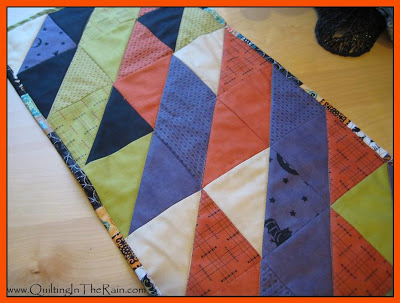











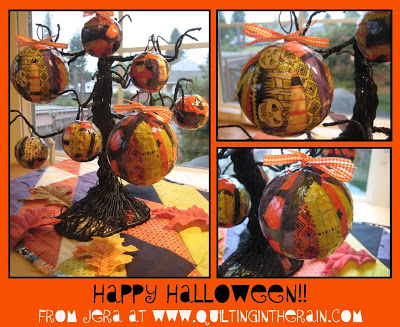






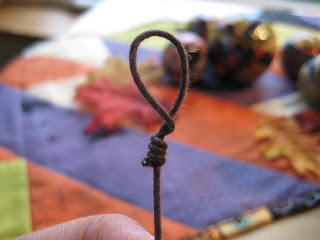
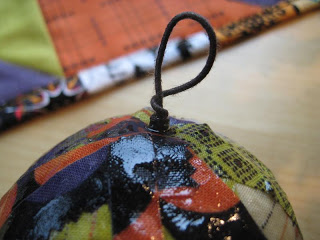






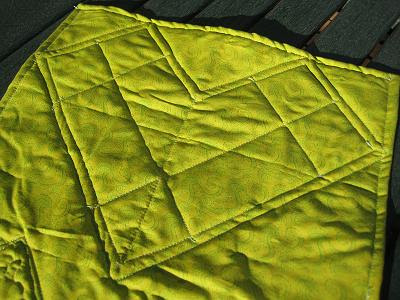

 With free-motion quilting, you have total control of the movement of fabric beneath the needle because the feed dogs on your sewing machine are covered. On the contrary, when using a regular presser foot for straight-stitching the feed dogs are exposed (which is why you should never pull the fabric when straight-stitching, simply guide the fabric through). Maintaining a constant sewing speed and fabric movement under the needle will help you sew even stitches. To secure a stitch, simply hold the fabric in place and sew several times in the same spot. This is basically the equivalent of doing a back stitch but with a darning foot. Do this when you start and end a stitch. When free-motion quilting, it helps to choose a continuous pattern (i.e. loopy-loops or swirls).
With free-motion quilting, you have total control of the movement of fabric beneath the needle because the feed dogs on your sewing machine are covered. On the contrary, when using a regular presser foot for straight-stitching the feed dogs are exposed (which is why you should never pull the fabric when straight-stitching, simply guide the fabric through). Maintaining a constant sewing speed and fabric movement under the needle will help you sew even stitches. To secure a stitch, simply hold the fabric in place and sew several times in the same spot. This is basically the equivalent of doing a back stitch but with a darning foot. Do this when you start and end a stitch. When free-motion quilting, it helps to choose a continuous pattern (i.e. loopy-loops or swirls).
Comments: 16 | Leave a comment